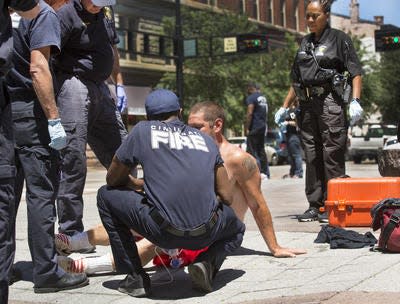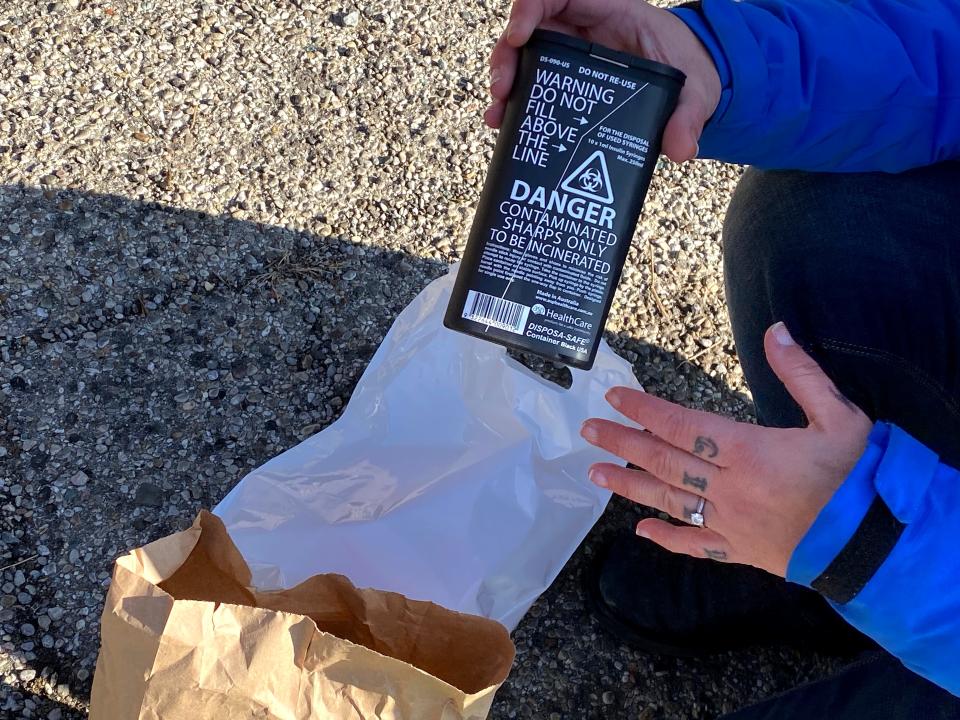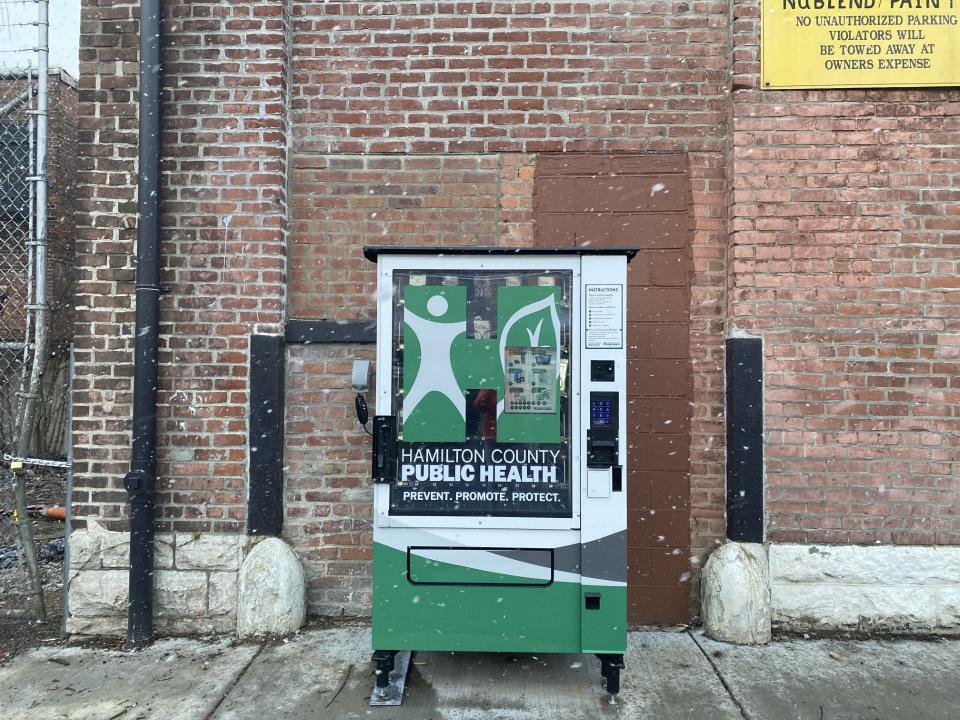Overdose deaths dive to nearly a decade low. What happened?
Deaths from overdose in Hamilton County in 2023 dropped for the second year in a row – this time to a level unseen in the county in nearly a decade.
“It’s huge,” said County Commissioner Denise Driehaus, executive chair of the Hamilton County Addiction Response Coalition. “But we need to temper our enthusiasm with the reality that people are still dying. We still are losing hundreds of people.”
Overdose deaths reached 393 in 2023, according to Hamilton County Corner’s Office records. That’s nearly a third fewer than the 570 in 2017, when the county was pummeled with its highest overdose death toll ever recorded. It's also close to 100 more deaths from overdose in 2014, the most recent year with a lower death toll recorded.
The Hamilton County Addiction Response Coalition, a group of stakeholders, agencies and experts in treatment, harm reduction, prevention, health care, criminal justice and more, planned to share its annual report, the State of the Addiction Crisis, on Friday at the Hamilton County coroner’s office.
The report describes an intricate list of ways that coalition committees have improved their work in 2023. It shows how funding and ground-level work has bolstered the likelihood of saving lives and guiding people to stability and long-term recovery.
From a ‘crisis with no system’ to a coordinated network of care, service
But a look back to 2014 – the last year Hamilton County had fewer overdose deaths than 2023 – shows a stark difference in the area’s capability to handle an overdose crisis.
Ten years ago, 2014, was when the deadly synthetic opioid fentanyl began embedding into the county’s illicit drug landscape. It was a few years after overdose deaths surpassed traffic fatalities in the United States.
It was when Hamilton County leaders – like those in communities across the country – had no idea how hard this newly identified opioid epidemic would hit its people. And no way to handle the coming onslaught of deaths.

“We had a crisis with no system to handle it,” said Dr. Shawn Ryan, founder of BrightView Health treatment clinics, who was among the earliest medical partners in the fight against the opioid epidemic.
“It would be like having no FEMA with a hurricane,” he said, referring to the federal emergency relief agency.
The Hamilton County Heroin Coalition, predecessor to the addiction response group, formed in 2015 with law enforcement and public health leaders among its founders. The idea was to join forces to fight a heroin scourge.
Over the years, the breadth of knowledge in how to save lives through evidence-based treatment and how to prevent spread of blood-borne diseases such as HIV and hepatitis C, through syringe exchange, fostered new programs. The coalition continues to expand, Driehaus said, with people who lived with addiction and are in recovery, workforce and recovery housing advocates, church and faith community members and, she said, “many, many partners.”
She said the coalition is fairly successful in getting people into treatment and is now working hard on providing more paths – including work training and housing - to long-term recovery.

The coalition continues to grow and change. Its community partners number around 150.
Ten years ago, Ryan said, the county – along with most communities – had "uncoordinated, unsustained, unfocused" efforts – though well-intended.
Treatment wasn't readily available. "You’d have to wait a month, or months, to get in," Ryan said. It is a critical flaw because people who have opioid use disorder feel compelled to use the drug frequently to stave off excruciating withdrawal symptoms. And with every use, there is risk of death.
Now, there is a way to get into treatment the same day, or perhaps a day later, that the person seeks it. Now, Ryan said, Hamilton County’s approach is a model for other communities to emulate.
What did the Hamilton County coalition do in 2023?
Among the Prevention First and the Cincinnati Urban Minority Alcoholism and Drug Abuse Outreach Program efforts were:
Launching a text-message system for Ohioans to request medication disposal pouches.
Putting medication disposal drop boxes at five Cincinnati Public Health clinics.
Reaching kids in high-risk neighborhoods through prevention education programs and families for wrap-around services.
Hamilton County Mental Health and Recovery Services Board distributed funding to these and other efforts:
$22.9 million to help fund residential treatment, counseling, medication-assisted treatment, intensive outpatient and peer support services, recovery housing and more.
$50,000 for Hamilton County Public Health for xylazine wound-care kits.
$160,000 from OneOhio Recovery fund (nationwide opioid settlement funding) to provide medical care to people who lost Medicaid eligibility.
More: A 'grassroots' process: How Hamilton County will spend $1.6 million in opioid settlements
The Hamilton County Heroin Task force investigated individual overdose deaths and survivals to find the origin of the drugs taken. The drug-interdiction task force recovered:
1,166.5 grams of fentanyl.
, 1,721.4 grams of cocaine.
114.5 grams of meth.
The Hamilton County Quick Response Team work included wellness checks, veterans outreach, an emphasis on outreach to Black residents, a demographic that has seen a burst in overdose deaths, mental health relief outreach and more. The group also had community-based events in targeted neighborhoods to provide life-saving tools such as naloxone.
"Our Quick Response Team's strategic intervention approach ensures tailored support for individuals at any stage of addiction or recovery," said Meagan Guthrie, director of the Hamilton County Addiction Response office. The idea is to meet people where they are and provide any kind of help they need to stay safe and healthy.
The group also continued, with partners, a program in Lower, East and West Price Hill to reach and provide services to people who had overdosed most frequently. The approach has resulted in a 66% drop in the number of documented overdoses, the report shows.
More: Cincinnati opioid addiction response strategy focuses on those most vulnerable to overdose
Harm reduction efforts from the Hamilton County Public Health included:
Naloxone distribution totaled 20,840 doses to public health's safe services mobile unit, first responders, treatment providers, correctional facilities, vending, health departments and others.
A Hamilton County Public Health program launched Stories over Stigma, a program in which public health and fire department employees hear from people with firsthand experience of substance use.
Three new "stigma-free" vending machines to provide supplies including naloxone, safe-sex kits and fentanyl test strips.

Faith community efforts included:
Four churches providing counseling, ushering 76 people into treatment.
Three youth community conversations.
A Peer Recovery Network collaboration with churches that led to 169 outreach events and 166 referrals to treatment.
A businesses committee for workplace education and help with addiction has garnered 50 business partners in the region and reported that its resource posters for workers have been scanned 337 times as of Feb. 9, 2024, providing employees with access to a substance use disorder treatment and recovery resources.
In December 2023, the coalition also added a recovery committee, to include people who have life experience struggling with addiction will help shape the coalition's programs.
What's next?
Driehaus said the coalition's commitment to helping people with substance use disorders and return to health will continue to evolve. There are additional goals for 2024, the report shows, including expanding treatment availability 24-7 and continuing efforts for safe drug disposal.
"We need to keep our eye on the ball. We’re not there yet.," Driehaus said. "This is personal for so many people. People with lived experience. People who’ve lost family members."
This article originally appeared on Cincinnati Enquirer: Hamilton County overdose deaths drop to nine-year low in 2023

